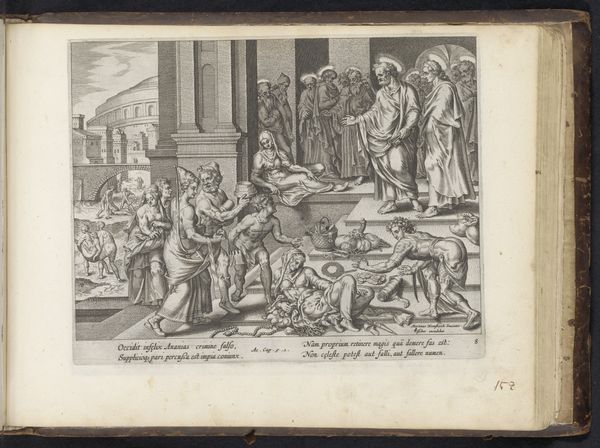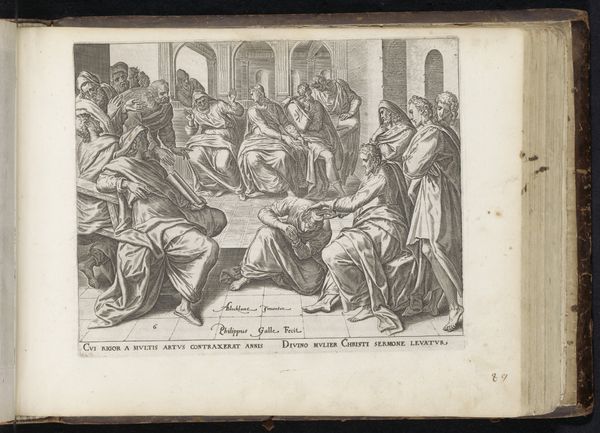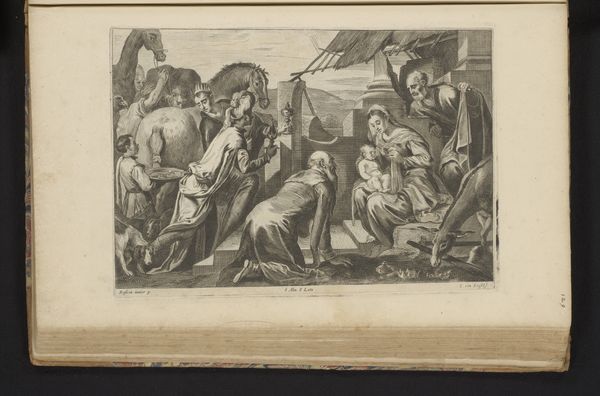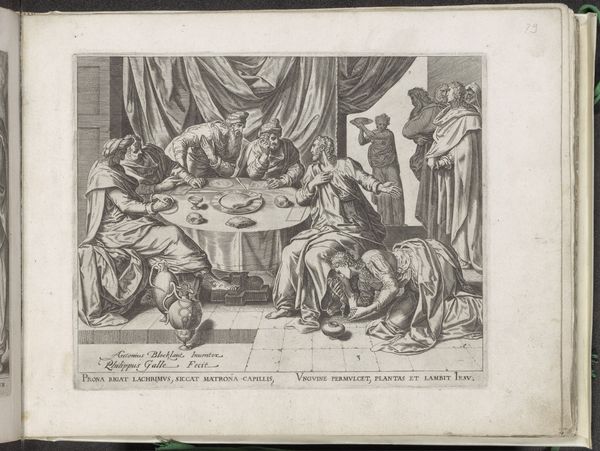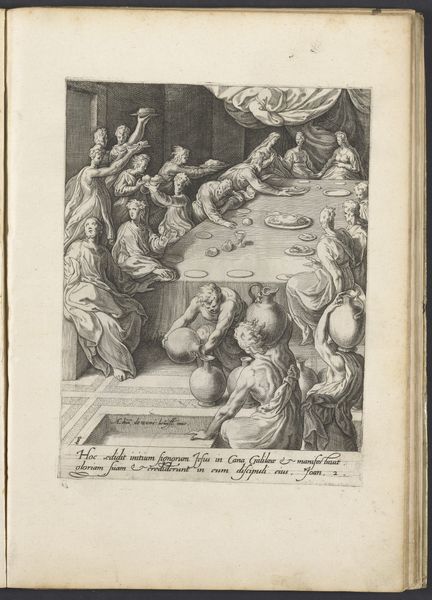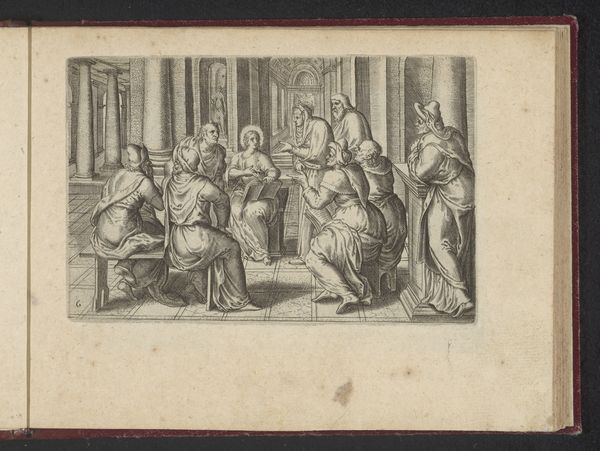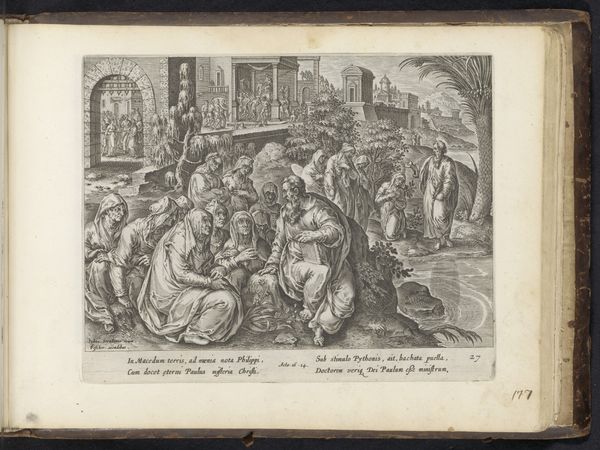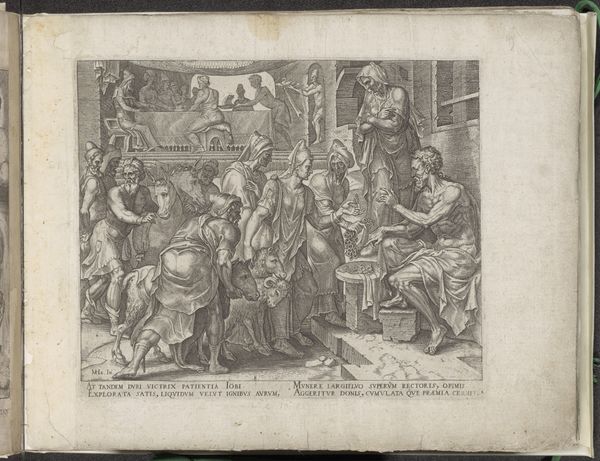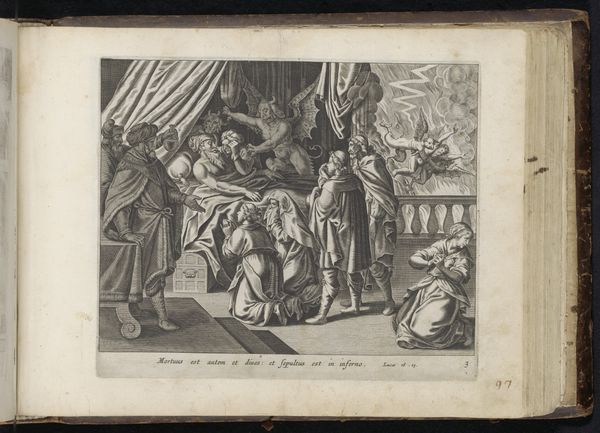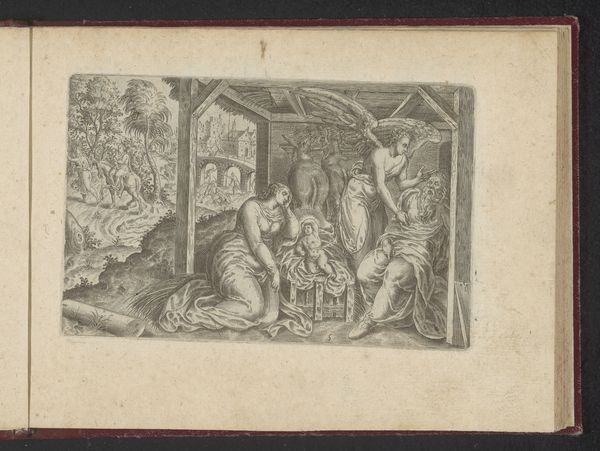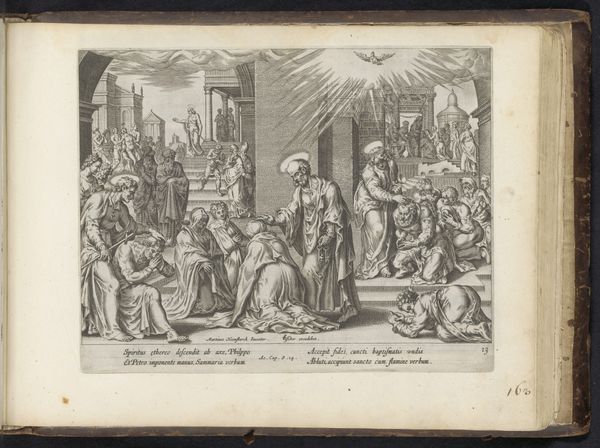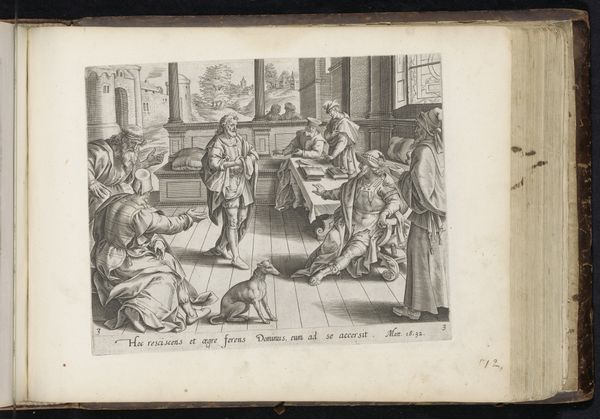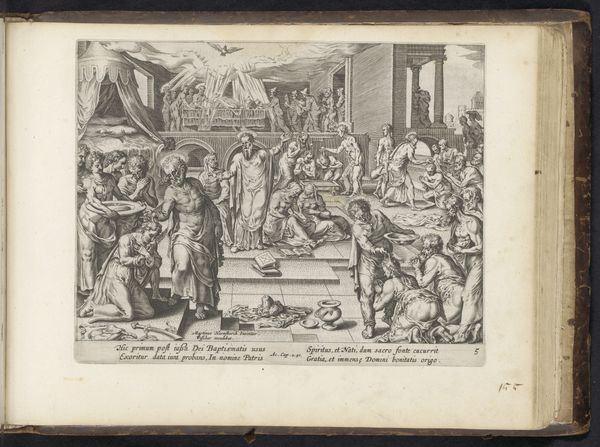
print, engraving
# print
#
figuration
#
11_renaissance
#
history-painting
#
northern-renaissance
#
engraving
Dimensions: height 190 mm, width 233 mm
Copyright: Rijks Museum: Open Domain
Philips Galle created this engraving, Vier evangelisten, which translates to "Four Evangelists", sometime between 1537 and 1612. Galle was a printmaker in the Netherlands, during a time of religious reformation and conflict. The engraving depicts the four evangelists of the New Testament—John, Luke, Matthew, and Mark—seated around a table, each accompanied by their symbolic animal. These symbols, which have origins in ancient Jewish and Christian traditions, represent the unique characteristics attributed to each evangelist. Here, we see Mark's lion, Luke's bull, John's eagle, and Matthew's angel. Galle’s decision to portray the Evangelists with their animal symbols speaks to a time when literacy was not widespread; the symbols were a way for people to identify them. By linking human figures with animal attributes, Galle's work offers a lens through which we might examine the construction of identity. What does it mean to assign animalistic traits to these figures? How do these symbols reflect the societal values and beliefs of the time? Notice how this representation upholds traditional views while also sparking questions about the boundaries between the human and the non-human.
Comments
No comments
Be the first to comment and join the conversation on the ultimate creative platform.
